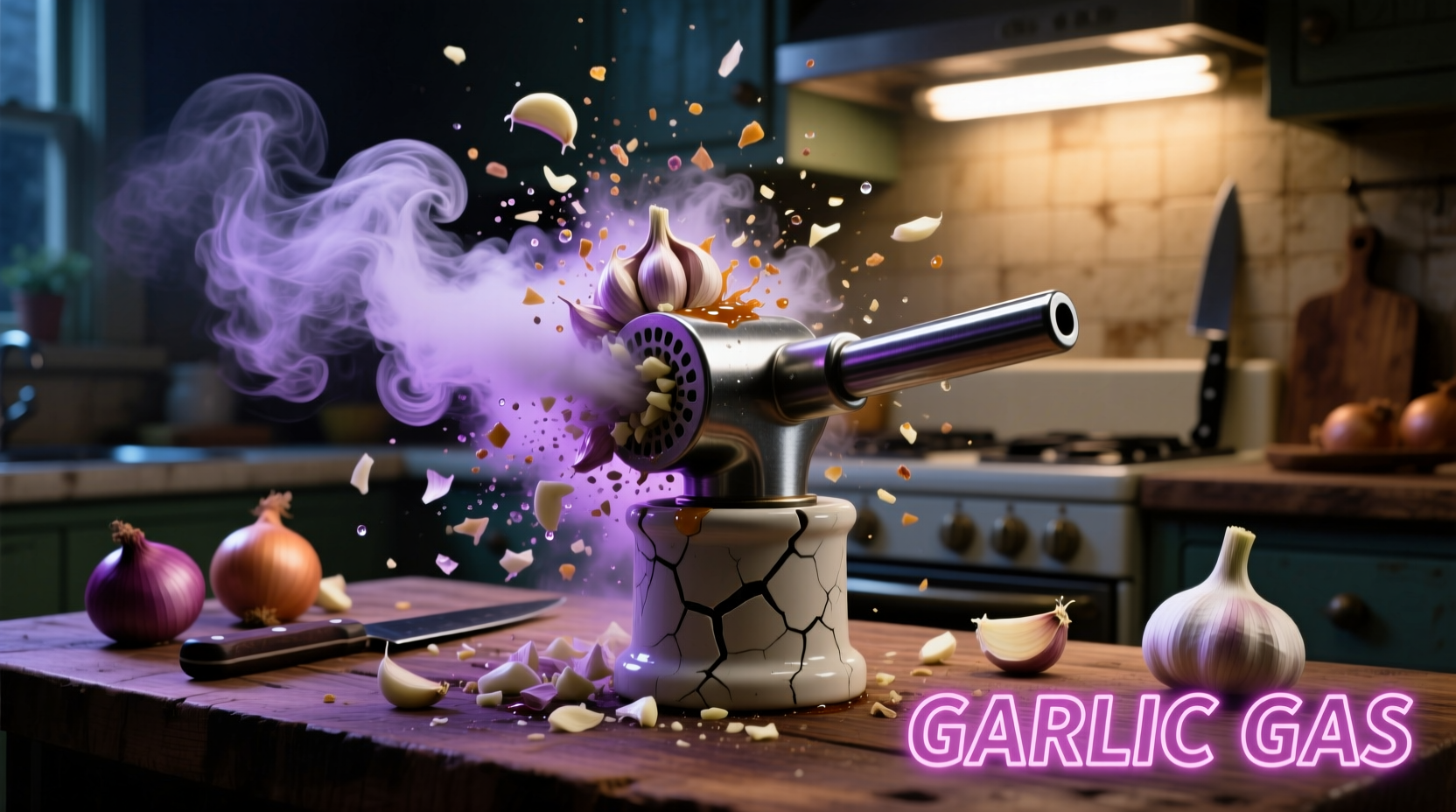Why Garlic Triggers Gas: The Science Simplified
Garlic contains significant amounts of fructans, which belong to the FODMAP (Fermentable Oligosaccharides, Disaccharides, Monosaccharides, and Polyols) family of carbohydrates. Unlike simple sugars, fructans aren't fully broken down in the small intestine for many people. Instead, they travel to the large intestine where gut bacteria ferment them, producing gas as a natural byproduct.
According to research published in the Journal of Gastroenterology and Hepatology, garlic ranks among the highest FODMAP-containing foods, with just one clove containing approximately 0.8g of fructans. For individuals with irritable bowel syndrome (IBS) or general digestive sensitivity, even small amounts can trigger noticeable symptoms within 30-90 minutes of consumption.

How Much Garlic Causes Gas? Understanding Your Personal Threshold
Not everyone experiences garlic-induced gas equally. Your tolerance depends on several factors including your gut microbiome composition, overall digestive health, and whether you have underlying conditions like IBS. The Monash University Low FODMAP Diet research team has established these general thresholds:
| Garlic Form | Typical Fructan Content | Common Reaction Threshold |
|---|---|---|
| Raw garlic (1 clove) | 0.8g | 1 clove for sensitive individuals |
| Cooked garlic (1 clove) | 0.6g | 2-3 cloves for sensitive individuals |
| Garlic-infused oil | Negligible | Generally well-tolerated |
| Black garlic (1 clove) | 0.3g | 3-4 cloves for sensitive individuals |
Practical Solutions to Enjoy Garlic Without the Gas
Before eliminating garlic from your diet completely, try these evidence-based strategies that reduce gas production while preserving flavor:
Smart Preparation Techniques
Cooking garlic changes its chemical structure. Sautéing garlic in oil for 5-7 minutes reduces fructan content by approximately 25% compared to raw consumption. The National Institute of Diabetes and Digestive and Kidney Diseases (NIDDK) recommends cooking methods that break down FODMAPs for better digestion.
Strategic Pairing Approach
Combine garlic with digestive-friendly foods. Consuming garlic alongside foods containing natural digestive enzymes (like pineapple or papaya) can improve breakdown. The American Gastroenterological Association notes that proper food combining significantly reduces digestive discomfort for many patients.
Portion Control Strategy
Start with small amounts (1/4 clove) and gradually increase over weeks. Research from the Monash University Department of Gastroenterology shows that 68% of people with mild garlic sensitivity can build tolerance through controlled exposure.
When Garlic Gas Signals Something More Serious
While occasional gas after garlic consumption is normal, certain symptoms warrant medical attention. The American College of Gastroenterology identifies these red flags:
- Persistent pain lasting more than 24 hours after garlic consumption
- Significant changes in bowel habits accompanying gas
- Unintended weight loss with digestive symptoms
- Blood in stool along with gas issues
If you experience these symptoms regularly with garlic or other foods, consult a healthcare provider to rule out conditions like small intestinal bacterial overgrowth (SIBO) or inflammatory bowel disease.
Long-Term Management for Garlic Lovers
For those who frequently experience garlic gas, consider these sustainable approaches:
Garlic-Infused Oil Technique
Create your own garlic-infused oil by gently heating olive oil with crushed garlic for 10-15 minutes, then removing the garlic solids. Since fructans are water-soluble but not oil-soluble, this captures garlic flavor without the gas-producing compounds. This method is endorsed by gastroenterologists as part of the low FODMAP diet approach.
Black Garlic Alternative
Fermented black garlic contains significantly lower fructan levels while offering complex umami flavor. Studies in the Journal of Agricultural and Food Chemistry show the fermentation process breaks down approximately 60% of the original fructans.
Digestive Enzyme Support
Consider alpha-galactosidase supplements taken before meals containing garlic. Clinical trials published in Digestive Diseases and Sciences demonstrate these enzymes can reduce gas production by 40-60% in FODMAP-sensitive individuals.
Frequently Asked Questions
Why does garlic cause more gas than other vegetables?
Garlic contains particularly high concentrations of fructans compared to most vegetables. While onions (a close relative) contain about 0.5g of fructans per serving, garlic packs approximately 0.8g per clove. Additionally, garlic's allicin compounds can temporarily accelerate gut motility, making gas symptoms more noticeable.
Can cooking garlic completely eliminate gas problems?
Cooking reduces but doesn't eliminate garlic's gas-producing potential. Heat breaks down some fructans, but significant amounts remain. Roasting or sautéing for 5-7 minutes reduces fructan content by about 25%, while prolonged cooking (30+ minutes) may reduce it by up to 40%. For severe sensitivity, garlic-infused oil provides flavor without the problematic carbohydrates.
How long after eating garlic does gas typically occur?
Gas symptoms from garlic typically begin 30-90 minutes after consumption as the undigested fructans reach the large intestine. The peak effect usually occurs 2-4 hours post-meal, with symptoms resolving within 6-12 hours for most people. Those with slower digestion may experience prolonged effects up to 24 hours.
Is garlic gas a sign of garlic allergy or intolerance?
Garlic gas typically indicates carbohydrate intolerance (specifically to fructans), not an allergy. True garlic allergies are rare and involve immune system reactions like hives, swelling, or breathing difficulties. Intolerance causes digestive symptoms only. If you experience symptoms beyond digestive discomfort, consult an allergist for proper testing.
Can probiotics help reduce gas from garlic?
Specific probiotic strains may help improve garlic tolerance over time. Research in the World Journal of Gastroenterology shows that Bifidobacterium infantis and Lactobacillus plantarum strains can enhance FODMAP digestion. However, results vary by individual, and probiotics typically require 4-8 weeks of consistent use before noticeable improvement in gas symptoms.











 浙公网安备
33010002000092号
浙公网安备
33010002000092号 浙B2-20120091-4
浙B2-20120091-4